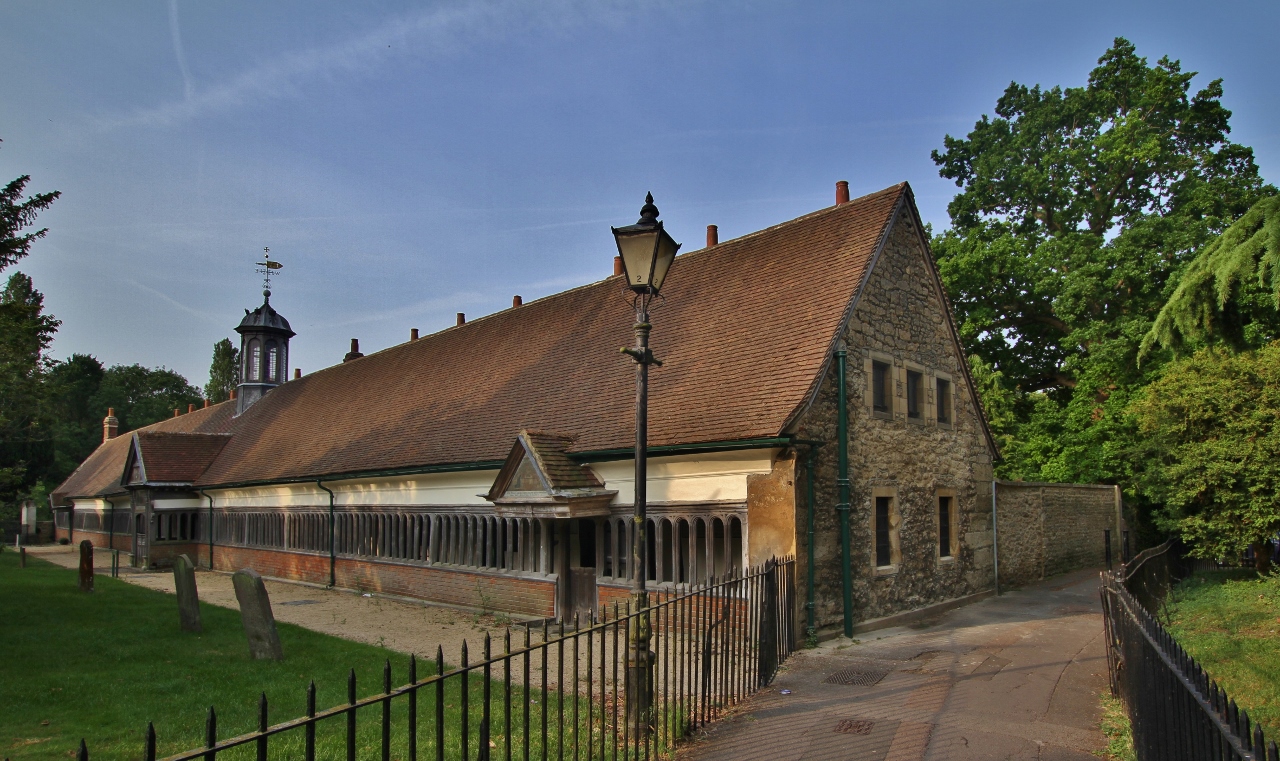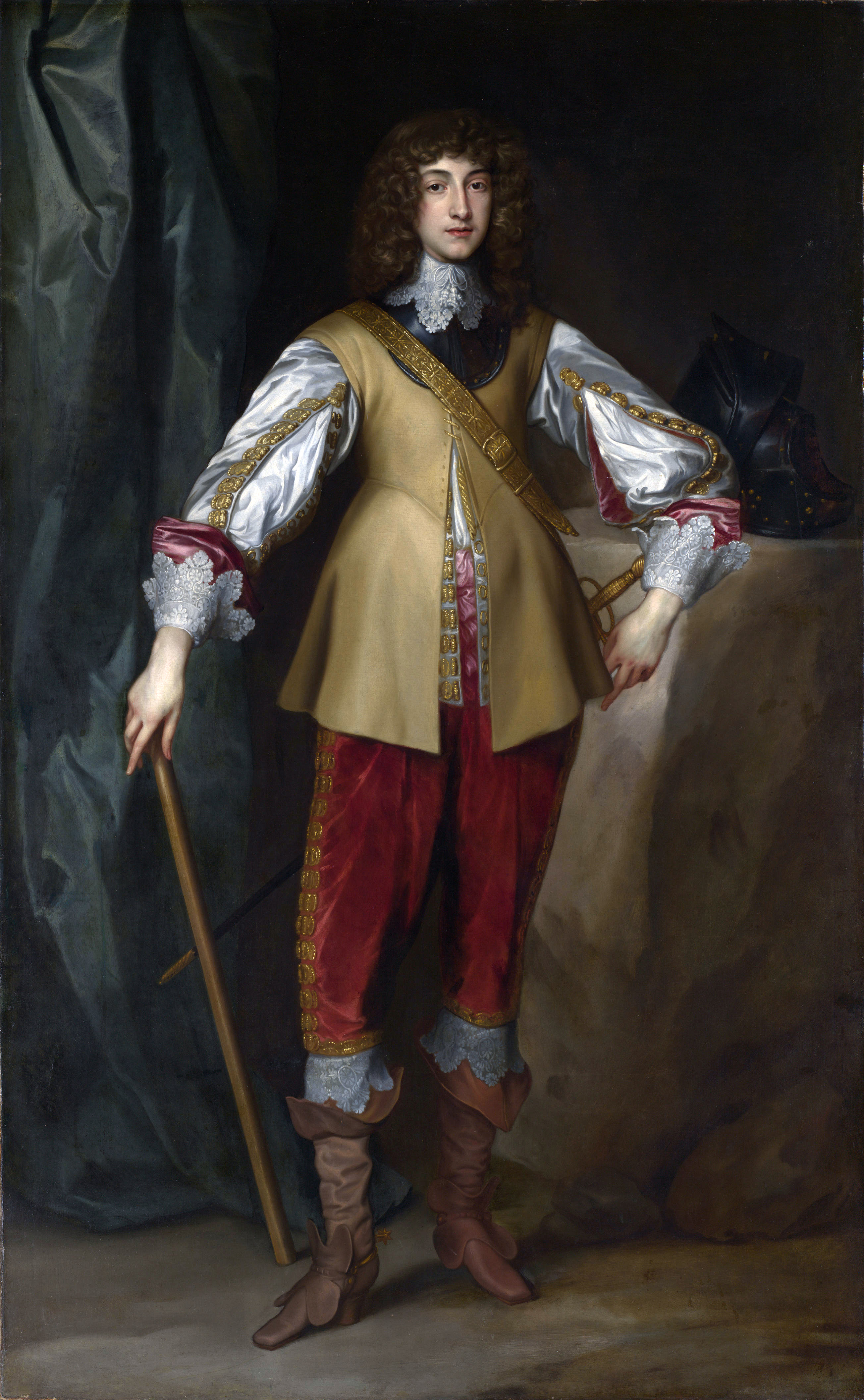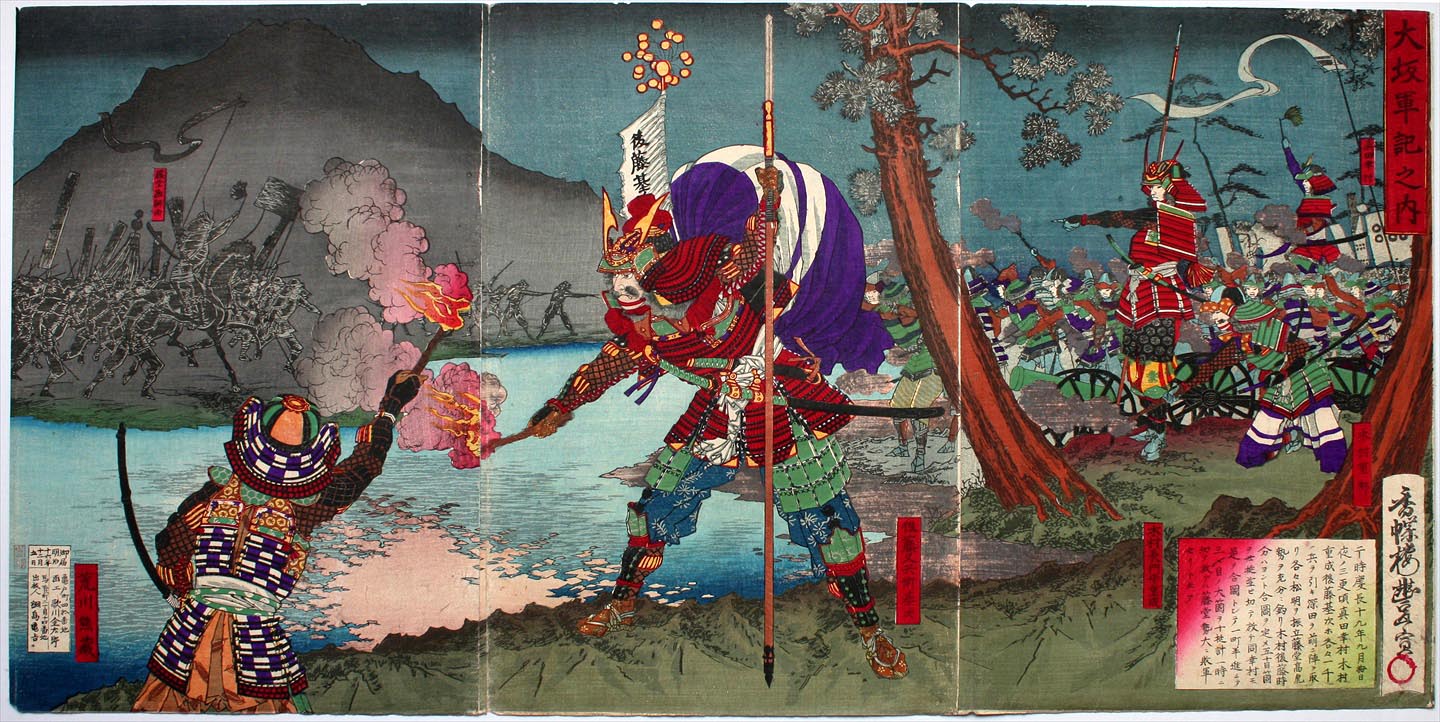|
Robert Levinz
Robert Levinz, Levens or Levinge (161518 July 1650), Royalist, was a son of William Levinz of Senkworth, near Abingdon, who carried on the business of a brewer at Oxford. His grandfather, William Levinz, was an alderman of Oxford, and five times mayor at the close of the sixteenth century; he was buried in All Saints Church, where there is a fine recumbent effigy to his memory. Robert was uncle of Sir Creswell Levinz, Baptist Levinz, and William Levinz. He matriculated at Lincoln College, and graduated B.A. on 4 February 1634, and D.C.L. in 1642. He was commissary in 1640 to the Bishop of Norwich, Richard Montagu (Cal. State Papers, Dom. 1640–1, pp. 394, 397). On the outbreak of the Civil War he took up arms for the king at Oxford, and obtained the rank of captain, but on the capitulation of the city to the parliament (after the Siege of Oxford) in 1646 appears to have resumed his studies. After Charles I's execution, he was employed by Charles II in various negotiations, and ... [...More Info...] [...Related Items...] OR: [Wikipedia] [Google] [Baidu] |
Abingdon-on-Thames
Abingdon-on-Thames ( ), commonly known as Abingdon, is a historic market town and civil parish in the ceremonial county of Oxfordshire, England, on the River Thames. Historically the county town of Berkshire, since 1974 Abingdon has been administered by the Vale of White Horse district within Oxfordshire. The area was occupied from the early to middle Iron Age and the remains of a late Iron Age and Roman defensive enclosure lies below the town centre. Abingdon Abbey was founded around 676, giving its name to the emerging town. In the 13th and 14th centuries, Abingdon was an agricultural centre with an extensive trade in wool, alongside weaving and the manufacture of clothing. Charters for the holding of markets and fairs were granted by various monarchs, from Edward I to George II. The town survived the dissolution of the abbey in 1538, and by the 18th and 19th centuries, with the building of Abingdon Lock in 1790, and Wilts & Berks Canal in 1810, was a key link between major ... [...More Info...] [...Related Items...] OR: [Wikipedia] [Google] [Baidu] |
English Council Of State
The English Council of State, later also known as the Protector's Privy Council, was first appointed by the Rump Parliament on 14 February 1649 after the execution of King Charles I. Charles' execution on 30 January was delayed for several hours so that the House of Commons could pass an emergency bill to declare the representatives of the people, the House of Commons, as the source of all just power and to make it an offence to proclaim a new King. This in effect abolished the monarchy and the House of Lords. History The Council of State was appointed by Parliament on 14 and 15 February 1649, with further annual elections. The Council's duties were to act as the executive of the country's government in place of the King and the Privy Council. It was to direct domestic and foreign policy and to ensure the security of the English Commonwealth. Due to the disagreements between the New Model Army and the weakened Parliament, it was dominated by the Army. The Council held its fi ... [...More Info...] [...Related Items...] OR: [Wikipedia] [Google] [Baidu] |
Cavaliers
The term Cavalier () was first used by Roundheads as a term of abuse for the wealthier royalist supporters of King Charles I and his son Charles II of England during the English Civil War, the Interregnum, and the Restoration (1642 – ). It was later adopted by the Royalists themselves. Although it referred originally to political and social attitudes and behaviour, of which clothing was a very small part, it has subsequently become strongly identified with the fashionable clothing of the court at the time. Prince Rupert, commander of much of Charles I's cavalry, is often considered to be an archetypal Cavalier. Etymology Cavalier derives from the same Latin root as the Italian word and the French word (as well as the Spanish word ), the Vulgar Latin word '' caballarius'', meaning 'horseman'. Shakespeare used the word ''cavaleros'' to describe an overbearing swashbuckler or swaggering gallant in Henry IV, Part 2 (c. 1596–1599), in which Robert Shallow says "I'll drink to ... [...More Info...] [...Related Items...] OR: [Wikipedia] [Google] [Baidu] |
Alumni Of Lincoln College, Oxford
Alumni (singular: alumnus (masculine) or alumna (feminine)) are former students of a school, college, or university who have either attended or graduated in some fashion from the institution. The feminine plural alumnae is sometimes used for groups of women. The word is Latin and means "one who is being (or has been) nourished". The term is not synonymous with "graduate"; one can be an alumnus without graduating ( Burt Reynolds, alumnus but not graduate of Florida State, is an example). The term is sometimes used to refer to a former employee or member of an organization, contributor, or inmate. Etymology The Latin noun ''alumnus'' means "foster son" or "pupil". It is derived from PIE ''*h₂el-'' (grow, nourish), and it is a variant of the Latin verb ''alere'' "to nourish".Merriam-Webster: alumnus .. Separate, but from th ... [...More Info...] [...Related Items...] OR: [Wikipedia] [Google] [Baidu] |
People From Abingdon-on-Thames
A person ( : people) is a being that has certain capacities or attributes such as reason, morality, consciousness or self-consciousness, and being a part of a culturally established form of social relations such as kinship, ownership of property, or legal responsibility. The defining features of personhood and, consequently, what makes a person count as a person, differ widely among cultures and contexts. In addition to the question of personhood, of what makes a being count as a person to begin with, there are further questions about personal identity and self: both about what makes any particular person that particular person instead of another, and about what makes a person at one time the same person as they were or will be at another time despite any intervening changes. The plural form "people" is often used to refer to an entire nation or ethnic group (as in "a people"), and this was the original meaning of the word; it subsequently acquired its use as a plural form of p ... [...More Info...] [...Related Items...] OR: [Wikipedia] [Google] [Baidu] |
Date Of Birth Unknown
Date or dates may refer to: * Date (fruit), the fruit of the date palm (''Phoenix dactylifera'') Social activity * Dating, a form of courtship involving social activity, with the aim of assessing a potential partner ** Group dating *Play date, an appointment for children to get together for a few hours *Meeting, when two or more people come together Chronology * Calendar date, a day on a calendar ** Old Style and New Style dates, from before and after the change from the Julian calendar to the Gregorian calendar ** ISO 8601, an international standard covering date formats * Date (metadata), a representation term to specify a calendar date **DATE command, a system time command for displaying the current date * Chronological dating, attributing to an object or event a date in the past ** Radiometric dating, dating materials such as rocks in which trace radioactive impurities were incorporated when they were formed Arts, entertainment and media Music * Date (band), a Swedi ... [...More Info...] [...Related Items...] OR: [Wikipedia] [Google] [Baidu] |
1615 Births
Events January–June * January 1 – The New Netherland Company is granted a three-year monopoly in North American trade, between the 40th and 45th parallels. * February – Sir Thomas Roe sets out to become the first ambassador from the court of the King of England to the Mughal Emperor Jahangir, sailing in the ''Lyon'' under the command of captain Christopher Newport. * March 10 – John Ogilvie, a Jesuit priest, is hanged and drawn at Glasgow Cross in Scotland for refusing to pledge allegiance to King James VI of Scotland; he will be canonised in 1976, becoming the only post-Reformation Scottish saint. * April 21 – The Wignacourt Aqueduct is inaugurated in Malta. * May 6 – The Peace of Tyrnau is signed between Matthias, Holy Roman Emperor, and Gábor Bethlen. * June 2 – The first Récollet missionaries arrive at Quebec City, from Rouen, France. * June 3 – The Eastern Army of Tokugawa Ieyasu and the Osaka ... [...More Info...] [...Related Items...] OR: [Wikipedia] [Google] [Baidu] |
William Winstanley
William Winstanley (c. 1628 – 1698) was an English poet and compiler of biographies. Life Born about 1628, William Winstanley was the second son of William Winstanley of Quendon, Essex, (d. 1687) by his wife Elizabeth. Henry Winstanley was his nephew. William was sworn in as a freeman of Saffron Walden on 21 April 1649. He was for a time a barber in London (Wood, Athenae Oxon. ed. Bliss, iv. 763), but he soon relinquished the razor for the pen. "The scissors, however, he retained, for he borrowed without stint, and without acknowledgement also, from his predecessors", Much of his literary work commemorates his connection with Essex. He published under his own name a poem called 'Walden Bacchanals,' and he wrote an elegy on Anne, wife of Samuel Gibs of Newman Hall, Essex (Muses' Cabinet). There is little doubt that most of the almanacs and chapbooks issued from 1662 onwards under the pseudonym of "Poor Robin" came from his pen. He was a staunch royalist after the Restoration ... [...More Info...] [...Related Items...] OR: [Wikipedia] [Google] [Baidu] |
Robert Bertie, 1st Earl Of Lindsey
Robert Bertie, 1st Earl of Lindsey KG (16 December 1582 – 24 October 1642) was an English peer, soldier and courtier. Early life Robert Bertie was the son of Peregrine Bertie, 13th Baron Willoughby de Eresby (b. 12 October 1555 – d. 25 June 1601) and Mary de Vere, daughter of John de Vere, 16th Earl of Oxford, and Margery Golding. Queen Elizabeth I was his godmother, and two of her favourite earls (Robert Dudley, 1st Earl of Leicester, and Robert Devereux, 2nd Earl of Essex), whose Christian name he bore, were his godfathers. He had been part of Essex's expedition to Cádiz, and had afterwards served in the Netherlands, under Maurice of Nassau, Prince of Orange. He was even given temporary command of English forces during the Siege of Rheinberg in the summer of 1601. The long Continental wars throughout the peaceful reign of King James I had been treated by the English nobility as schools of arms, as a few campaigns were considered a graceful finish to a gentleman's ed ... [...More Info...] [...Related Items...] OR: [Wikipedia] [Google] [Baidu] |
Peregrine Bertie (MP For Lincolnshire)
Sir Peregrine Bertie (c. 1584–1639) was a Jacobean soldier and landowner from Lincolnshire. He represented that county in Parliament in 1614, attended to local land improvements, and took part in several wars on the continent. He and his elder brother Robert Bertie, 1st Earl of Lindsey, Lord Willoughby were frequently at odds with Francis Norris, 1st Earl of Berkshire, Lord Norreys. Peregrine was the second son of the famous Elizabethan soldier Peregrine Bertie, 13th Baron Willoughby de Eresby. He was admitted to Corpus Christi College, Cambridge in 1594. He travelled to France in 1599. When his father died in 1601, Peregrine inherited a manor in Norfolk and the reversion of Barbican Estate, Willoughby House in London. He was admitted to the Middle Temple in 1605. In 1610, Bertie obtained a place as a gentleman of the privy chamber to Henry Frederick, Prince of Wales, Prince Henry, and was created a Knight of the Bath on 2 June, when Henry was invested as Prince of Wales. Late ... [...More Info...] [...Related Items...] OR: [Wikipedia] [Google] [Baidu] |
David Lloyd (biographer)
David Lloyd (28 September 1635 – 16 February 1692) was a British biographer. Life and career David Lloyd, son of Hugh Lloyd, was born at Pant Mawr, in the parish of Trawsfynydd, Merionethshire, on 28 September 1635, and was educated at Ruthin School in Denbighshire. In 1653 he became a servitor of Merton College, Oxford, where he discharged the duties of janitor. He graduated B.A. 30 Jan. 1656–7 from Oriel College, Oxford. The Warden (college), warden and fellows of Merton College presented him to the rectory of Ibstone, Oxfordshire, in May 1658, and he commenced M.A. 4 July 1659. Resigning his rectory in 1659, he came to London and was appointed reader in the London Charterhouse, Charterhouse School under Dr. Timothy Thurscross. About 1663 he suffered six months' imprisonment at the suit of the John Egerton, 3rd Earl of Bridgewater, Earl of Bridgewater, who resented Lloyd's publication of a work describing the late countess's virtues under the title ''The Countess of Bridgew ... [...More Info...] [...Related Items...] OR: [Wikipedia] [Google] [Baidu] |
Royal Exchange, London
The Royal Exchange in London was founded in the 16th century by the merchant Sir Thomas Gresham on the suggestion of his factor Richard Clough to act as a centre of commerce for the City of London. The site was provided by the City of London Corporation and the Worshipful Company of Mercers, who still jointly own the freehold. The original foundation was ceremonially opened by Queen Elizabeth I who granted it its "royal" title. The current building is trapezoidal in floor plan and is flanked by Cornhill and Threadneedle Street, which converge at Bank junction in the heart of the city. It lies in the ward of Cornhill. The exchange building has twice been destroyed by fire and subsequently rebuilt. The present building was designed by Sir William Tite in the 1840s. The site was notably occupied by the Lloyd's insurance market for nearly 150 years. Today the Royal Exchange contains Fortnum & Mason The Bar & Restaurant, luxury shops, and offices. Traditionally, the steps o ... [...More Info...] [...Related Items...] OR: [Wikipedia] [Google] [Baidu] |



_1938.jpg)



.jpg)